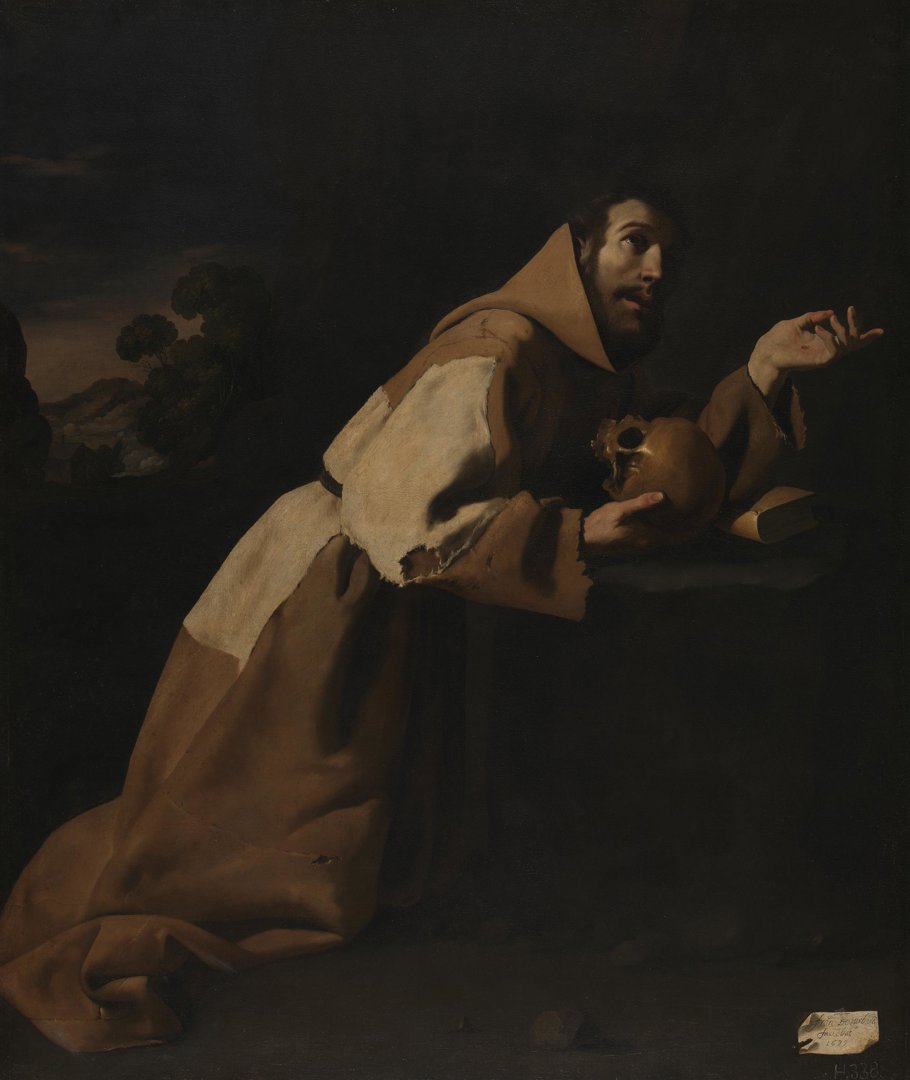Episode 37 bonus track
The National Gallery Podcast
This is a bonus track from the National Gallery podcast, accompanying episode 37.
Miranda Hinkley (in the studio): This is a bonus track from the National Gallery podcast. You’re listening to an extract from ‘The Sacred Made Real’ audio guide. If you’d like to take the full tour, it’s available from audio guide desks throughout the Gallery.
Narrator: This room is devoted to one of the most revered saints in 17th-century Spain – Francis of Assisi. Saint Francis, who had died in 1226, was famous for his renunciation of wealth. And in this picture by Zurbarán from the latter half of the 1630s our eyes are immediately drawn to his patched and frayed habit of brown cloth, tied by a knotted rope. Saint Francis’s humility and charity was greatly admired by the Catholic Church in Spain and he was held up as an exemplary figure. But it was his intense form of prayer that really caught the religious mood of the time. And here, where we see him holding a skull in his clasped hands and raising his face to heaven, we realise he is in a state of religious ecstasy, oblivious to all distractions. Zurbarán’s sculptural illusionism makes the saint appear very close to us, and as we struggle to make out his features, it’s hard not to be swept up by the emotion of the moment. Key to this work’s power is the dramatic contrast between light and shade. Other artists, most notably Caravaggio in Italy, had worked in this style. And many have assumed the Spanish were simply following his lead. The Reverend Hanvey, however, sees Zurbarán’s use of light and shade as essential to its meaning.
James Hanvey: What he does is he uses it to capture the drama of the mystical life in which there is light and darkness and there’s a whole play going on about light and darkness because God is light, in him there is no darkness. The light overcomes the darkness, the darkness in us, the darkness in our world. So there’s that drama that’s certainly taking place. But then there’s a more subtle, mystical understanding of that, where to be led into God is to be led into the most profound darkness.


